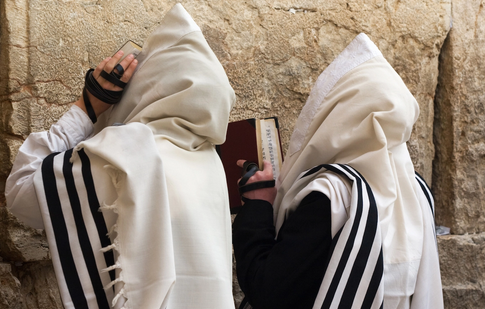The High Holy Days of Tishrei
Tishrei is the name of the busiest month of the Hebrew calendar. When you purchase calendars with the Jewish Holy Days and festivals identified, you’ll notice that Tishrei is the first month on those calendars, even though it is considered the seventh month of the religious year when counting from the first month of Nissan during which the Exodus from Egypt occurred.
The month of Tishrei begins with two days of Rosh Hashana, followed by an interim period of seven days, followed by one day of Yom Kippur. Add them up and you have the ten-day period at the beginning of the Hebrew calendar called The High Holy Days, or in Hebrew they are called Yamim Noarim, The Days of Awe.
This period is sometimes called The Ten Days of Repentance, and the single Shabbat during these ten days is called Shabbat Shuva, or The Shabbat of Return.
People unfamiliar with the deep significance of Jewish holidays often think Rosh Hashana is similar to January 1 st when we wish each other Happy New Year. Jews say Shana Tova, the Hebrew phrase for Good Year. But that greeting means far more than Happy New Year in the life of the Jewish people.
The Sound of the Shofar on Rosh Hashana
Rosh Hashana is understood to represent the sixth day of Creation when mankind was created. Such a momentous event certainly deserves to be observed each year, and that is exactly what the entire ten-day period represents.
Rosh Hashana is the day when we, the Jewish people all over the world, focus our attention on waking up from our daily distractions and acknowledge that God, our Creator, is also our King. We do this in communal prayer and by hearing the sound of the shofar, the ram’s horn, blown in a special series of blasts that awaken us like no other sound on earth.
Once we have set aside the first two days of the new Jewish year to acknowledge God as King, we have a week to consider our thoughts and actions in the past year and to ask God for the help we need to improve our lives in the new year. We ask God for forgiveness in many ways, and we also ask people in our lives for forgiveness, too. The Ten Days of Repentance require genuine humility before God and also before our friends, family members, co-workers, and others we may have wronged.
Fasting on Yom Kippur
The first ten days on the Jewish calendar are significant because we not only remember the creation of mankind in the past, but we are willing to be re-created anew in the present. We pray together as a people group for forgiveness and for the help we need from God to become renewed and better people. Yom Kippur is a fast day. As a people group we come together, emptied of our past by forgiveness and willing to receive the blessing of the new year together. Yom Kippur is called The Day of Atonement when the ten-day process called The High Holy Days is sealed for the entire year.




